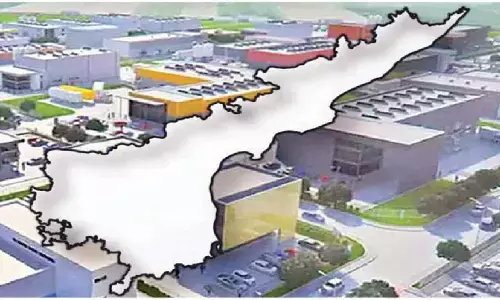Will Trump’s moves boomerang on US economy?

After the turbulent month of March 2018, with Donald Trumps announcement of imposing harsh tariffs on Chinese goods including commodities like steel and aluminum, the international community has been on the verge of witnessing a fullscale global trade war that could plunge the global economy into a recessionary period,
After the turbulent month of March 2018, with Donald Trump’s announcement of imposing harsh tariffs on Chinese goods (including commodities like steel and aluminum), the international community has been on the verge of witnessing a full-scale global trade war that could plunge the global economy into a recessionary period, marked by an uptick in inflation, high unemployment and lower living standards. Considered to be ‘the biggest trade war in economic history so far’, the USA has declared 25 per cent tariffs on $50 billion dollars worth of Chinese goods alongside accusations against China for intellectual property theft (product designs and ideas) and forced technology transfers from American companies.
Imposition of tariffs would compel the Chinese administration to impose retaliatory tariffs, which they have in fact already initiated. The consequences of this retaliation can be dire. Take soybeans for example: China has imposed import tariffs on soybeans from US, and instead is importing the commodity from Brazilian soybean producers. Considering this alarming situation, the American soybean producers will be heavily impacted, mainly in Ohio, Dakota, and Illinois, to the extent that some of them are planning to march down to Washington to lobby for taking food products off the trade-war list.
Apart from the Chinese response to the tariffs, an imminent threat looms over the US regarding the international response to such a large-scale trade war. Interestingly, the Trump administration had threatened the European Union (EU) with the imposition of steel and aluminum tariffs, which they duly carried out earlier this year. In response to this, the European Commission (an institution of the EU) hit back on the US by imposing retaliatory tariffs of 25% worth $3.2 billion dollars, on products such as Harley-Davidson motorbikes, peanut butter and cigarettes.
According to Jean-Claude Juncker, the President of the European Commission, who believes that the “United States’ decision to impose tariffs on Europe goes against all logic and history”, has assured not to stop at just a single set of import duties on America. The EU has in fact stated that if the trade war continues, they will be taxing an additional $4.3 billion-dollar worth of goods, including on commodities like porcelain dishes and paper towels.
Other close allies of the US like Canada and Mexico have also been affected by the Trump administration’s rampant tariff impositions on steel and aluminum. The leaders of both countries have immediately and angrily reacted to this situation and have assured to hit back on the US with much stronger retaliatory tariffs.
In the end, the trade war has done nothing but led to a tit-for-tat situation between the US and its allies by initiating successive rounds of retaliation between them. Pragmatically speaking, there is no winner in any trade war and since each country is incessantly imposing retaliatory tariffs on each other, they are damaging their respective trade relations as well as disturbing their balance of payments.
Such a situation can be further understood by the help of the ‘Prisoner’s dilemma theory’. In the context of the trade wars, the theory primarily refers to the extent to which both countries benefit from a potential trade war. The only way a country can benefit from a trade war is by assuming that the opposite party does not react in the form of retaliatory tariffs, which is evidently not the case.
Hence, when the US imposed tariffs in order to reduce their imports, China at the same time retaliated by levying tariffs on imports from the US (leading to a reduction in US exports), resulting in a minimal net benefit to the US, or even a negative impact on their economy.
Considering the tariff war, the International Monetary Fund (IMF) had published simulations regarding the economic damage that the US and each involved country would face, if the US imposes a permanent ten-percentage point increase in the tariffs on imports to the country. The basic reasoning the simulation gives is as follows: the tariffs collected are distributed to households through general transfers, which in turn would increase domestic consumption. Also, the increase in tariffs leads to a decline in import volumes, which in turn would lead to a relative increase in export volumes and a decline in the trade deficit gap.
A relative increase in the export volumes then leads to an appreciation of the American dollar, which in turn would moderate the foreign demand for US goods. The relatively lower demand for US goods finally leads to a decline in domestic business investments and activities in the long run. As for the international consequences, they will be witnessed in the form of fluctuations in the exchange rates and trade linkages. The conclusion that the simulation gives is that the effective increase in the imposition of tariffs would lead to a 1% decline in the GDP of the US and a 0.3% decline in the GDP of the involved countries. Evidently, the simulation is an indicator that largely every country involved would lose out badly.
It is highly likely that the Trump administration is unable to assess the economic impact of the import-substitution policy that they are currently following. Rather than imposing high tariff walls, the US should encourage export-oriented companies to become even more competitive in the global market, with effective measures such as higher spend on research and development (R&D), improvement in logistics infrastructure, faster turnaround at ports etc. The argument behind export-promotion is straightforward and logical: the US should produce and export more and more of those goods for which their production costs are cheaper as compared to their trading partners and import more and more of those goods for which their production costs are higher as compared to their trading partners.
Thus, the US should meet its objective of reducing the trade deficit by encouraging exports rather than blocking imports. In fact, the US should follow in the footsteps of South Korea’s trading policy of the 1960s. The South Korean government followed a rigid export-promotion policy by making sure that all obstacles faced by exporters were promptly removed. In less than a decade, their exports grew from 3.5% of their GDP in 1963 to 21.3% in 1972, with an annual growth of 9.5% within the same decade .
The Trump administration is thus committing a grave mistake by assuming that it can win a trade war. Instead of trying to discourage imports into the US, it should wisely go all out to promote exports from the US.
- Rajveer Singh Kochar
(Rajveer Singh Kochar is currently a Grade 12 student of The Doon School, Dehradun. He is currently pursuing the IB Diploma programme and is deeply interested in international economics and politics)

















